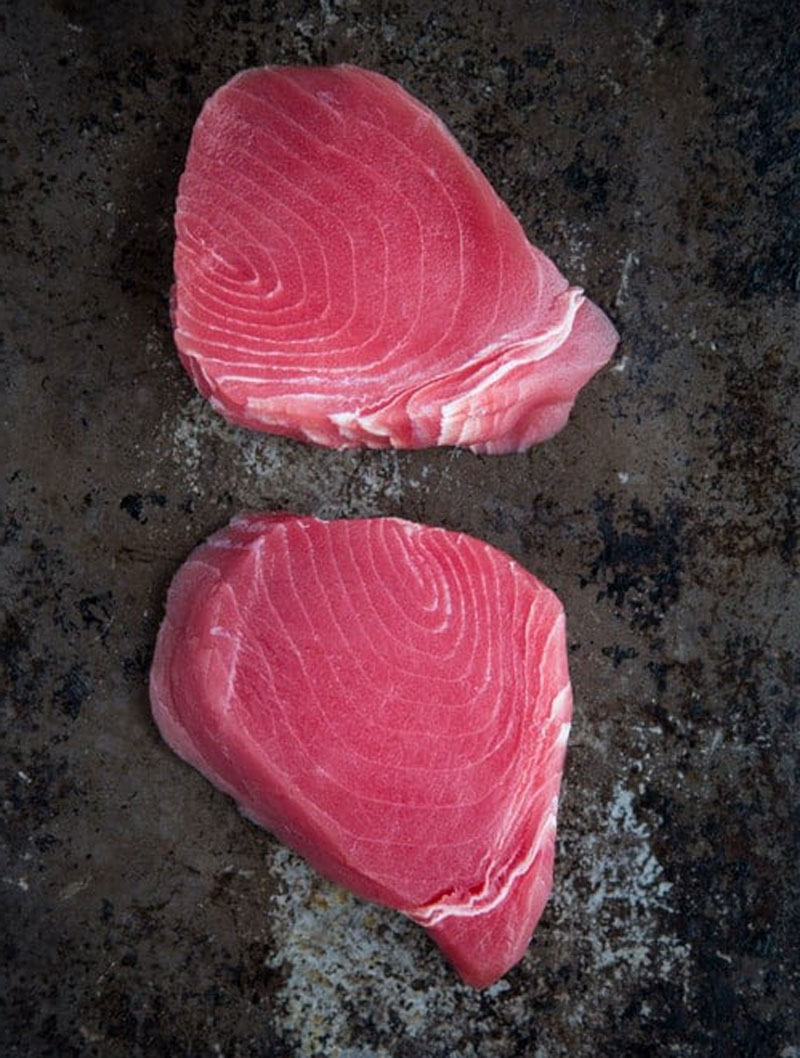Depending on where you are in the world and what you intend to do with your tuna, there’s a lot of conflicting advice with regards to how to kill, bleed, fillet and store your tuna. Fortunately there’s a few simple things to know and we’ll leave it up to you which techniques you want to employ.
1. Revive the Tuna
These fish have a very high metabolic rate and when you catch them they are often exhausted when you finally get them to the surface. A build up of lactic acid during this time can spoil the quality of the meat if you bring your tuna aboard immediately and start bleeding it etc. For this reason, most of the higher quality commercial tuna fishermen will tie a rope around the tail and anchor this rope to the boat whilst also re-hooking the tuna in the mouth. Then they allow it to swim alongside the boat at a slow pace until the tuna is revived and the lactic acid build-up dissipates enough.
Fish that are not revived are known as ‘burnt’ or in Japanese ‘Yake’
2. Kill and Bleed the tuna
Some people prefer to spike the tuna by inserting a thin metal spike into the brain area located on the top of the head between the eyes. This is a very humane and quick way to kill the tuna however it also prevents the heart from beating faster than bleeding the fish out. Commercial fishermen tend to slide the arteries located just behind the pectoral fins and place the fish back into the water to bleed out over the next 10-15 minutes. This also helps cool the tuna while helping oxygenate the fish and preventing the issue mentioned above from occurring.
Which ever method you want to use, the main point here is that you want to remove as much circulating blood from the fish as you can without it pooling or coagulating around the meat areas. Excess and coagulated blood will taint the taste of the meat whilst also increasing the amount of undesirable bacteria in the flesh.
3. Gut the Tuna
Removing the insides is relatively straightforward however because the belly meat is so prized, often fishermen will make a circular incision in the anus and pull out the entrails from the rear of the fish. Undesirable parts of the head are also sometimes removed. Note: often people will remove the head similar to smaller fish by removing the whole head by cutting at an angle behind the gil plates. You want to keep the head meat on the tuna as it is also very delicious.
4. Cool the Tuna down rapidly
As mentioned above the high metabolic rate of the tuna means that the flesh can be quite warm leading to spoilage. It is essential that the flesh is cooled as rapidly as possible and kept at a temperature just above freezing until you want to eat or further process the fish. The best way to do this is to apply ice to both sides of the fish and pack the inside cavity with crushed ice.
5. Avoid water contact with the exposed flesh
Often plastic fish bags are used to prevent water contact with the flesh altogether. Aboard larger ships, tuna are not packed in ice first. They are bagged once gutted and the bag is sealed before being submerged in a salt water ice slurry which rapidly cools the whole fish. Once they are almost frozen the carcasses are then packed with ice and snap frozen.
Water contact with the flesh will cause the flesh to hydrate and this leaches flavour and spoils the texture of the fish for eating purposes. You wouldn’t soak your beef steaks before eating them so why would you do the same for your tuna.

